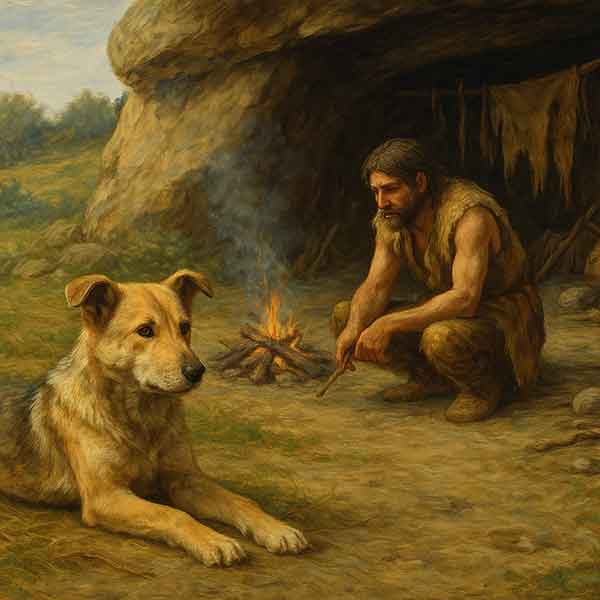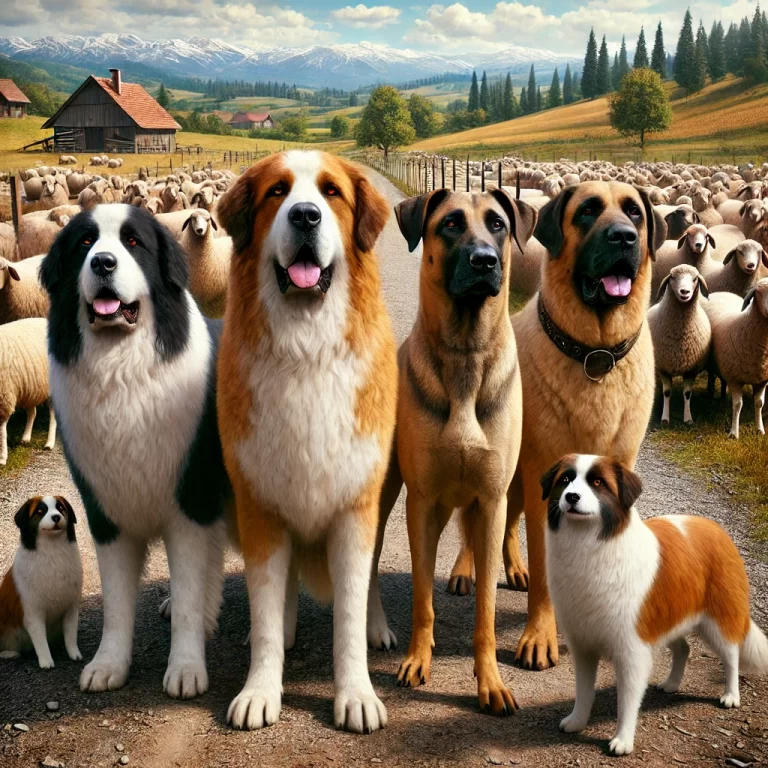When Was the Dog Domesticated? | The Evolution of Man’s Best Friend
Dogs are often celebrated as humanity’s oldest and most loyal companions. But when was the dog domesticated? How did a wild predator like the wolf evolve into the beloved pet lying at our feet today? The answer lies deep in prehistoric times, woven into the history of human survival and migration.
This in-depth article explores the origin, timeline, and science behind the domestication of dogs. From Ice Age hunters to modern households, the story of dogs and humans is one of the most enduring relationships in the natural world.
Table of Contents
- Introduction to Dog Domestication
- When Did Dogs First Appear?
- Archaeological Evidence of Early Dogs
- Theories on How Dogs Were Domesticated
- Where Were Dogs First Domesticated?
- Genetic Divergence from Wolves
- Evolution of the Dog-Human Bond
- FAQ
Introduction to Dog Domestication
The dog, Canis lupus familiaris, is a subspecies of the gray wolf. While wolves and dogs share a common ancestor, dogs have evolved to be more social, trainable, and dependent on humans. Unlike livestock, which were domesticated for meat or labor, dogs likely started out as scavengers and later became partners in hunting, protection, and companionship.
When Did Dogs First Appear?
There’s no exact date carved into stone that tells us when dogs became domesticated. However, most scientific estimates place the beginning of domestication between 20,000 and 40,000 years ago, during the Late Pleistocene epoch. This means dogs were likely living alongside humans before the advent of agriculture, making them the first domesticated animals in history.
DNA analysis supports the idea that dogs diverged from their wild wolf ancestors tens of thousands of years ago. However, the process of becoming “domesticated” may have taken centuries or even millennia of gradual interaction with humans.
Archaeological Evidence of Early Dogs
Fossils and burial sites have played a crucial role in dating dog domestication. Some key discoveries include:
- Bonn-Oberkassel (Germany): A 14,200-year-old burial site of a dog alongside two humans—suggesting emotional or social bonds.
- Ust’-Ishim (Siberia): Genomic data from human remains shows early dog-wolf divergence.
- Goyet Cave (Belgium): Dog-like remains dated at approximately 31,000 years ago, possibly among the earliest evidence of domesticated canines.
These findings suggest that dogs were already integrated into human life during the Ice Age, providing companionship and perhaps even spiritual or ritual significance.
Theories on How Dogs Were Domesticated
1. The Self-Domestication Theory
This theory suggests that some wolves began scavenging near human camps. Over time, the friendlier, more docile wolves were tolerated or even fed by humans. These wolves passed on their gentler traits, eventually evolving into early domesticated dogs.
2. The Human Selection Theory
In this model, humans actively selected wolf pups with favorable traits—like less fear or aggression—and raised them. These selectively bred wolves gradually evolved into more trainable and sociable animals: the first dogs.
3. Dual Domestication Hypothesis
Some researchers propose that dogs were domesticated more than once—in both Asia and Europe—and that these lineages later merged. Genetic evidence suggests distinct dog populations in different parts of the world that later intermixed.
Where Were Dogs First Domesticated?
The geographical origin of dog domestication remains debated. Proposed locations include:
- Central Asia (Kazakhstan, Mongolia): Supported by genetic diversity among modern dog breeds.
- East Asia (China): Archaeological sites and mitochondrial DNA studies suggest early domestication activity.
- Europe: Ancient dog remains and cultural integration point to early domestication practices.
It’s likely that domestication occurred in multiple regions, possibly even independently, based on local human and wolf populations.

Genetic Divergence from Wolves
Modern dogs and wolves share about 98.8% of their DNA, but behaviorally, they’re quite different. Genetic divergence is estimated to have begun between 20,000 and 40,000 years ago. Selective breeding and adaptation to human environments accelerated the differences over generations.
Dogs show distinct markers for traits like:
- Reduced aggression and fear
- Increased sociability and attachment
- Improved ability to understand human gestures
- Varied sizes, coat types, and physical features
Evolution of the Dog-Human Bond
Over thousands of years, dogs became far more than just working animals. They developed the ability to understand human emotions, gestures, and speech cues better than any other species—even better than chimpanzees in some studies.
Roles dogs have played throughout history include:
- Hunters: Assisting early humans in tracking and retrieving game
- Guards: Protecting villages and livestock
- Herders: Managing sheep, cattle, and goats
- Companions: Offering emotional support, especially in ancient and modern households
Today, dogs are used in therapy, law enforcement, search and rescue, and even medical detection—evidence of their remarkable adaptability and intelligence.
FAQ
When exactly was the dog domesticated?
The precise date is unknown, but most estimates place dog domestication between 20,000 and 40,000 years ago based on fossil and genetic evidence.
What animal did the dog evolve from?
Dogs evolved from a now-extinct population of gray wolves that lived during the Ice Age. They are not descended from modern gray wolves, but rather share a common ancestor.
Why were dogs the first domesticated animals?
Wolves that were less fearful of humans likely benefited from leftover food and shelter. This early mutualism made dogs ideal candidates for domestication.
Were dogs domesticated before farming?
Yes. Dogs were domesticated thousands of years before the advent of agriculture, during the hunter-gatherer era of human history.
Can dogs still breed with wolves?
Yes. Dogs and wolves are genetically similar enough to produce fertile offspring, called wolf-dog hybrids. However, behaviorally they are quite different.
Conclusion
So, when was the dog domesticated? While we can’t point to an exact year, overwhelming evidence shows that dogs were living alongside humans at least 20,000 years ago, and possibly much earlier. Through mutual benefit, selective breeding, and a growing emotional bond, dogs evolved from wild predators into beloved companions.
The story of dog domestication is more than just a historical fact—it’s a testament to the deep, enduring relationship between two species that chose to walk through history together. Understanding this shared journey enriches our appreciation for dogs today—not just as pets, but as true partners in the human story.






